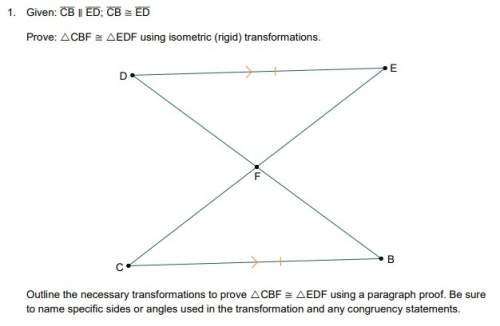
Mathematics, 25.04.2020 03:05 josephnoah12161
Assume that a newborn baby has three general behaviors: crying, eating, and sleeping. The amount of time corresponding to each of his three behaviors is exponentially distributed. If he is crying, he will always switch to eating after an average of 10 minutes. When he is eating, he does so for an average of 20 minutes, and then switches to crying with probability 0.2 or to sleeping with probability 0.8. When he falls asleep, he does so for an average of 120 minutes. After he wakes up, he will switch to crying or eating with equal probability.
(a) Draw the CTMC rate diagram, clearly label your states and transition rates (qᵢⱼ's).
(b) Find the transition rates out of the states (vᵢ's) and transition probabilities (Pᵢⱼ's).
(c) Find the limiting probabilities (make sure to write out the balance equations).
(d) In the long run, what is the probability that the baby is not crying?
(e) The father is taking care of the baby while mum tries to sleep. She is awake 90% of the time the baby is crying, 30% of the time the baby is eating and none of the time the baby is sleeping. What fraction of the time is the mum able to sleep?

Answers: 2


Another question on Mathematics

Mathematics, 21.06.2019 20:00
Afamily has five members. a mom, a dad, two sisters, & a brother. the family lines up single file. what is the probabillity that the mom is at the front of the line
Answers: 1

Mathematics, 21.06.2019 21:40
Write the contrapositive of the conditional statement. determine whether the contrapositive is true or false. if it is false, find a counterexample. a converse statement is formed by exchanging the hypothesis and conclusion of the conditional. a) a non-converse statement is not formed by exchanging the hypothesis and conclusion of the conditional. true b) a statement not formed by exchanging the hypothesis and conclusion of the conditional is a converse statement. false; an inverse statement is not formed by exchanging the hypothesis and conclusion of the conditional. c) a non-converse statement is formed by exchanging the hypothesis and conclusion of the conditional. false; an inverse statement is formed by negating both the hypothesis and conclusion of the conditional. d) a statement not formed by exchanging the hypothesis and conclusion of the conditional is not a converse statement. true
Answers: 1

Mathematics, 21.06.2019 23:00
Calculate the average rate of change over the interval [1, 3] for the following function. f(x)=4(5)^x a. -260 b. 260 c. 240 d. -240
Answers: 1

Mathematics, 22.06.2019 04:10
Is by a(-4, 2), b(-2, 4), c(1, 3), d(2, 2).of ofto . of d′ if90° to a′b′c′d′ (-2, 2) of c″ if90° to a″b″c″d″ (4, -2) of a′′′ if° to a′′′b′′′c′′′d′′′ (3, -1) of b″ if° to a″b″c″d″ (4, 2)
Answers: 1
You know the right answer?
Assume that a newborn baby has three general behaviors: crying, eating, and sleeping. The amount of...
Questions

Mathematics, 02.06.2020 00:00


Biology, 02.06.2020 00:00

Mathematics, 02.06.2020 00:00


Mathematics, 02.06.2020 00:00


Chemistry, 02.06.2020 00:01

Mathematics, 02.06.2020 00:01


Mathematics, 02.06.2020 00:01




Mathematics, 02.06.2020 00:01

English, 02.06.2020 00:01

History, 02.06.2020 00:01



Mathematics, 02.06.2020 00:01




